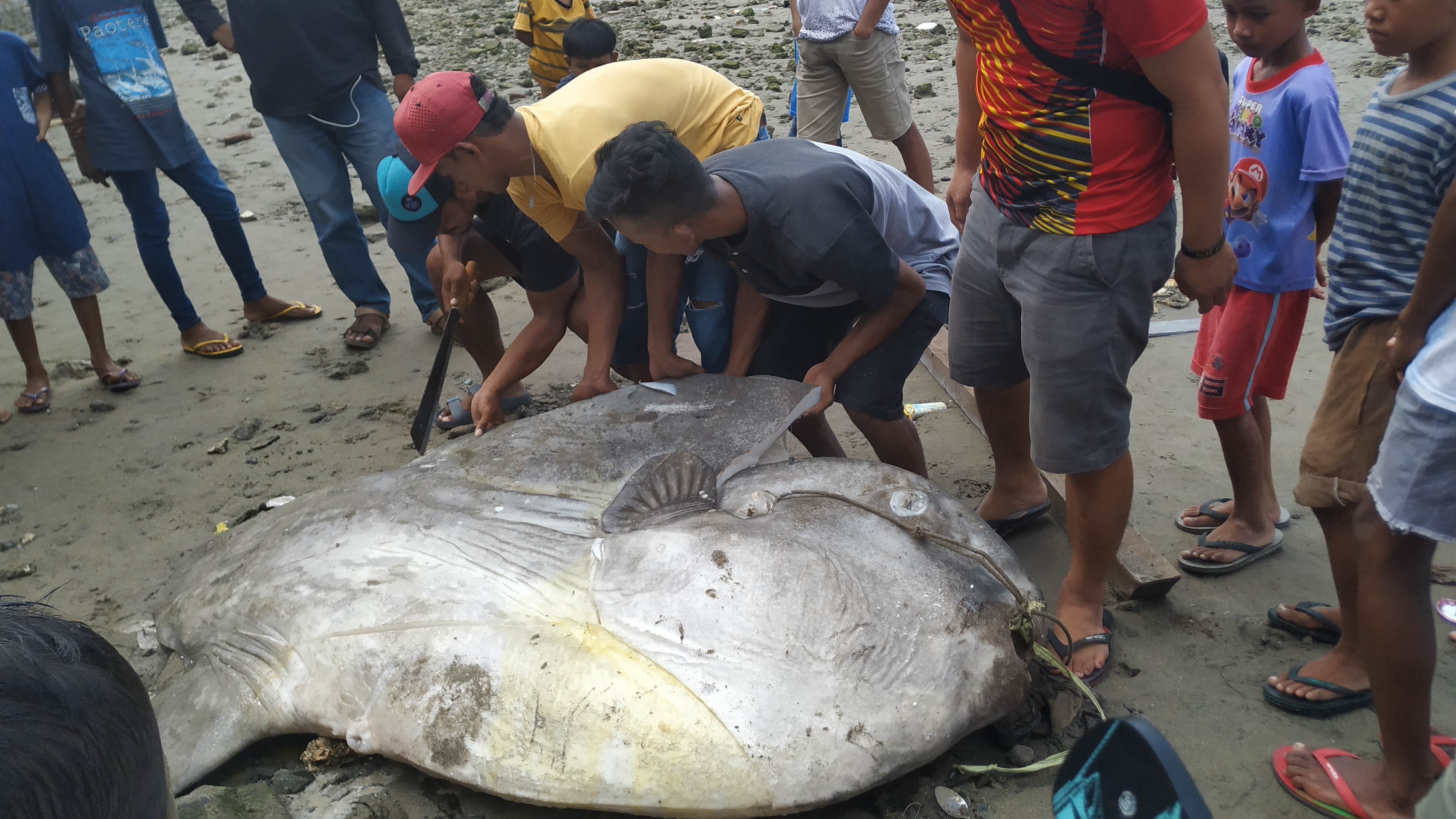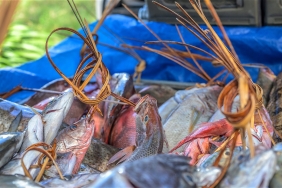Mola-Mola Stranded at the mouth of the Waehaong River, Ambon Bay
By: Abdul Maskur Marasabessy/MPA and Biodiversity Officer Seram Seascape
Friday, 11 January 2019, a sunfish or ocean sunfish (Mola sp) was found dead at the estuary of the Waehaong River which is adjacent to the Islamic Center building. The sunfish were found when the sea was receding. The large size of the fish and its strange shape, made residents around Waihaong start to gather together and upload pictures of the stranded sunfish on social media.
The WWF-Indonesia team, Abdul Maskur Marabessy (Aqul), who received this information from Instagram, immediately went to the location to help handle it. When they arrived at the location at 10.50 WIT, the community had already started cutting the fish into several pieces to make it easier to dispose of the carcass into the sea. "However, before the residents continued cutting, I asked for permission to take morphometric measurements first," said Aqul.
The total length of the fish is 250 cm with a width of 130 cm. If following the guidelines for handling stranded marine mammals, the condition of the sunfish is classified into code 2, namely it has just died and no swelling has occurred (fresh dead). Previously, three Waehaong residents, Ari Mahulette, Ojo and Sam had tried to pull the carcass of this fish into the sea, by tying a rope around its head. The large and heavy size of the fish makes them unable to attract the fish. In addition, the receding sea conditions made the distance to the sea even further, so efforts to drown the sunfish carcasses could not be carried out.
“We are trying to bury the carcass on the beach. But it turns out that this is also difficult to do because the weight of the fish is very heavy. There weren't many people who wanted to help, they just walked around to take photos and then left, explained Ari Mahulette. Finally, they took the initiative to cut this fish into several small sizes, then throw it into the sea. There is information that they got that the sunfish got caught in the fishermen's net.
A few minutes later, Syahril Wally, a fisherman came to the location, he had just bought a 2.5 inch net to replace his damaged net. Syahril said that at 5 in the morning he and his two colleagues were catching lema fish using drift gill nets around the Tantui fishing port. After the net was spread out, something tried to jump out of the water. Syahril and his colleagues checked their nets, and it turned out that a cut-out fish (as the local fishermen call sunfish) had become entangled in the nets and was pulling the nets into the sea.
The waters of Tantui were murky and deep enough that Syahril had to go to a shallower place to release the sunfish from the net. He started the 5.5-strength Katinting boat and pulled the fish that were still caught in the net to the Wahaong area. After being pulled for about 2.8 km, they cut the net and released the fish. "The fish looked tired, their eyes turned white and they didn't want to swim into the sea," said Syahril.
They tried to herd the fish into the sea by hand. Feeling that the fish had managed to swim again, he went ashore to set a new net. However, a few hours later Syahril heard that residents had gathered on the beach after finding a large strange fish. Only then did Syahril know that the sunfish eventually died and was carried away by the low tide to the beach.
The sunfish is a fish that lives in temperate and tropical climates. In Indonesia, one of the places of migration is the Nusa Penida region, Bali. They clean themselves from parasites with the help of reef fish as well as sunbathe to get sunlight, to adjust body temperature after being too long at depth. Even though the body is flat, the ancient fish included in this filter feeder can weigh up to 1000 kg. Mola-Mola is one of the 20 priority species for protection in 2015-2019 by the Ministry of Maritime Affairs and Fisheries.





